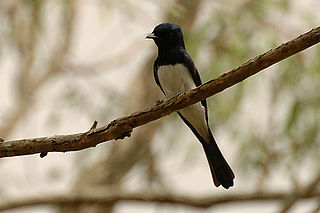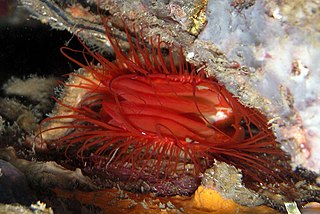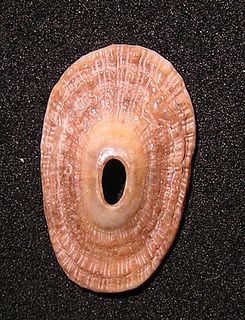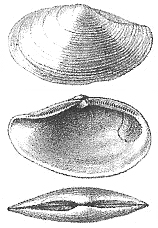
The satin flycatcher is a species of bird in the family Monarchidae. Males stand out with their blue-black feathers contrasting their white bellies, and the females with their bright orange throats. It breeds mostly in south-eastern Tasmania and Australia. It is declining throughout the eastern seaboard due to predation from the introduced Red Fox and habitat loss. It is a vagrant to New Zealand.
Nesopupa limatula is a species of very small air-breathing land snail, a terrestrial pulmonate gastropod mollusk in the family Vertiginidae, the whorl snails. This species is endemic to Hawaii in the United States.

The Limidae or file shells are members of the only family of bivalve molluscs in the order Limida. The family includes 130 living species, assigned to 10 genera. Widely distributed in all seas from shallow to deep waters, the species are usually epifaunal or nestling, with many species building byssal nests for protection. The majority of species are capable of irregular swimming by waving their long mantle tentacles.

Limatula, the file shells or file clams, is a genus of marine bivalve molluscs in the family Limidae.

Neoterebra limatula is a species of sea snail, a marine gastropod mollusk in the family Terebridae, the auger snails.

Lottia limatula is a species of true limpet, a marine gastropod mollusk in the family Lottiidae.
Lucapinella limatula is a species of sea snail, a marine gastropod mollusk in the family Fissurellidae, the keyhole limpets.

Lucapina is a genus of sea snails, marine gastropod mollusks in the family Fissurellidae, the keyhole limpets.

Lucapinella is a genus of sea snails, marine gastropod mollusks in the family Fissurellidae, the keyhole limpets.

Quinnia limatula is a species of extremely small deep water sea snail, a marine gastropod mollusk in the family Seguenziidae.
Scoparia limatula is a species of moth in the family Crambidae. It is endemic in New Zealand.
Paralicornia hamata is a species of gymnolaematan bryozoans first described from the Queensland coast. Originally placed in the genus Scrupocellaria, it has now been accepted within Paralicornia.

Yoldia is a genus of saltwater clams, marine bivalve mollusks in the family Yoldiidae. It was named after Alfonso de Aguirre y Yoldi, Conde de Yoldi (1764–1852), a Spanish nobleman in charge of the royal naturalistic collection of Denmark.
Limatula hodgsoni is a species of bivalve mollusc in the family Limidae, the file shells or file clams. It is native to the seas around Antarctica.
Paralicornia is a genus of gymnolaematan bryozoans.
Inferiolabiata is a genus of hydrozoans belonging to the family Stylasteridae.

The Socotran pipistrelle or Lanza's pipistrelle is an endangered species of vesper bat in the family Vespertilionidae. It is endemic to Socotra Island in Yemen, and is the only mammal thought to be endemic to the island.
Paralicornia obtecta is a species of Bryozoa, found in Australian waters. It has an avicularium with three protrusions, a feature also found in Paralicornia hamata and Paralicornia sinuosa.
Paralicornia sinuosa is a species of colonial bryozoan in the Paralicornia genus, found in the Indo-Pacific region. It was originally classified as a member of the Scrupocellaria genus.









